Here is a short list of 15 useful websites for musicians that I have discovered over the last couple of weeks. Many of these services are still in their beta versions so keep an eye out for them as they continue to grow and offer some pretty awesome products and services. Social media tools have enabled developers to find solutions for almost all facets of the music business, including band & tour management, e-commerce, digital distribution, music promotion, and metrics. Having an arsenal of tools like these may prove to eliminate the need of a record label for the do-it-yourself musician. In the right hands these tools may create some awesome social media success stories for good musicians.
Anyone have any success stories out there yet?
Band Management
Band Central – Online band management offering some pretty awesome tools that would make any DIY musicians life just a little bit easier. Tools include social media management, gig manager, band finances, easy file sharing, SMS fan alerts, and a centralized message board to help band communication.
Tour Management
Live Music Machine – Connects bands and fans through an online multimedia portal and portable widget. This service makes booking and managing gigs easier than ever, allowing fans, promoters, bar owners etc. to book an artist with the click of a button.
Eventful – Leading events website that enables its community to discover, share, promote, and create events. The Eventful Demand feature allows fans to demand appearances by musicians in their hometowns. Performers are able to use Eventful Demand to make informed decisions about where to appear and can communicate with their Demanders via highly targeted email tool.
Superfan – A social game based on collecting and contributing to all your favorites in order to become a super fan of your favorite musician, actor, comedian etc. This site creates a centralized location for your fan base allowing them to connect, share, and eventually become your #1 superfan.
Digital Distribution
Bandcamp – A free publishing platform for bands, provides artists with the most relevant content management and social marketing tools, with a super clean interface and friendly user management system. Allows visitors to purchase mp3’s in multiple formats – from the lowest quality to the highest – and features some awesome visualizers for streaming music.
Tunecore – Digital distribution across the majority of mainstream digital music channels such as iTunes, Amazon, eMusic, Limewire, etc. with no cut of the royalty percentage
Music Promotion – Discovery Networks
The Sixty-One – Combines the likes of a social network, music portal, and an interactive gaming experience. Members are given different “quests” such as listening to the other users playlists for a set amount of time, or listen to five songs of your favorite new artist. As individuals complete quests, they earn points and credibility, allowing community members to build social capital while also creating a unique, fun, and valuable experience. Excellent for independent artists to gain listeners and build a fan base.
Stereofame – Stereofame is a social music game that brings fans and artists together and empowers artists and listeners to determine what’s hot by creating virtual record labels. Features excellent social networking features, a music store, and monthly contests.
MOG – With thousands of contributions from music lovers and the top 300 music blogs that make up the network, MOG generates over 6,000 music blog posts per week, all hand-curated to deliver the web’s best daily music newspaper. MOG members receive personalized music recommendations and blog posts designed and chosen just for them.
Our Stage – Our Stage is a music discovery network that allows fans to artists to connect. Members are given the opportunity to vote on up and coming artists tracks, allowing the best musicians to be featured on Our Stage charts and streaming radio channels. OurStage also hosts contests and rewards the top artists by connecting them with industry professionals.
Music Mogul – The world’s first online music world for independent artists. Musicians are allowed to post video, then promote their music to the online fan community. Every 90 days an artist will be chosen by online peers and a celebrity panel to win a chance to record a three song demo with a Grammy award winning producer. Artists even have the opportunity to preform live through music mogul to the global online audience.
Measuring Success
Band Metrics – provides a first-of-its-kind semantic web application for the music industry that collects, analyzes and displays dynamic popularity and trends about musicians and bands from across the web. It’s a great solution for independent artists to understand the drivers of their music’s popularity, and their fans’ sentiments towards their music.
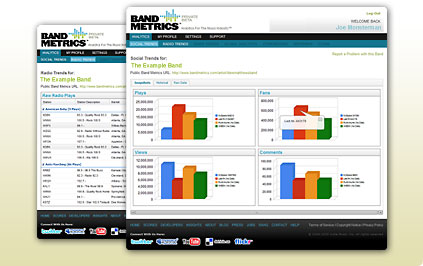
Echo Nest – Fanylitics – The Echo Nest’s Fanalytics is the web’s first targeted online music promotion system — it acts like a recommendation engine for music marketers. Fanalytics understands the specific tastes of every music writer on the web and helps you find the writers most likely to review your music.
Rock Dex – Powered by Music Arsenal, this tool scours the social web and music sites to judge your bands social buzz, social media presence, fan base, and number of listens. The tool generates grades out of 100 and offers suggestions to help boost your Rock Dex score.
We Are Hunted – We Are Hunted listens to what people are saying about artists and their music on blogs, social networks like Facebook and MySpace, message boards and forums, Twitter and P2P networks to chart the top songs online everyday. Essentially a billboard chart for the social media space.
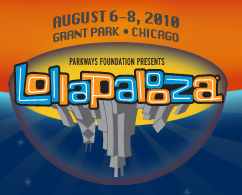 Lollapalooza has announced an interesting experiment on their Facebook & Twitter streams today asking fans and followers to submit their top 5 favorite bands for consideration in the Lollapalooza 2010 lineup. They’ve provided a link to a web page asking users to “Be a Booking Agent” and submit any genre of artist by November 11th along with other information such as a name and zip code. This unique festival crowdsourcing strategy comes amidst a number of innovative social media efforts taken by Lollapalooza organizers in 2009. Check out this case study on the festival’s use of social media in 2009 to generate buzz. While exact details of how they will use the information remain somewhat foggy, it is important to point out that Lollapalooza is undertaking an extremely interesting initiative that could change the nature of music festivals for musicians, organizers, and fans.
Lollapalooza has announced an interesting experiment on their Facebook & Twitter streams today asking fans and followers to submit their top 5 favorite bands for consideration in the Lollapalooza 2010 lineup. They’ve provided a link to a web page asking users to “Be a Booking Agent” and submit any genre of artist by November 11th along with other information such as a name and zip code. This unique festival crowdsourcing strategy comes amidst a number of innovative social media efforts taken by Lollapalooza organizers in 2009. Check out this case study on the festival’s use of social media in 2009 to generate buzz. While exact details of how they will use the information remain somewhat foggy, it is important to point out that Lollapalooza is undertaking an extremely interesting initiative that could change the nature of music festivals for musicians, organizers, and fans.


 The paid-download world of digital music is a tricky beast to tame. Artists continue to struggle to generate revenue even though they can easily establish a distribution network via iTunes, eMusic, Amazon, CDbaby.com, and so on. Here lies the problem. Digital distribution is fragmented among only a few big players. Consumers continue to remain loyal to their chosen distribution networks whether it be iTunes or a bitorrent site like Mininova. When a person hears a new band or song, it is almost instinctual that they Google the name and stumble onto either a MySpace page or an artist website. Discovery is not the issue. The issue arises when someone hopes to buy the music, but is forced to search through iTunes, see if the band is available on eMusic, or scour the web for torrent files. From a user experience perspective, this deters a good amount of the target audience away from seeking out actual copies of the music in exchange for the ability to stream music.
The paid-download world of digital music is a tricky beast to tame. Artists continue to struggle to generate revenue even though they can easily establish a distribution network via iTunes, eMusic, Amazon, CDbaby.com, and so on. Here lies the problem. Digital distribution is fragmented among only a few big players. Consumers continue to remain loyal to their chosen distribution networks whether it be iTunes or a bitorrent site like Mininova. When a person hears a new band or song, it is almost instinctual that they Google the name and stumble onto either a MySpace page or an artist website. Discovery is not the issue. The issue arises when someone hopes to buy the music, but is forced to search through iTunes, see if the band is available on eMusic, or scour the web for torrent files. From a user experience perspective, this deters a good amount of the target audience away from seeking out actual copies of the music in exchange for the ability to stream music. 
 Radiohead is no stranger to developing innovative digital strategies to sell and promote there music. Recently, in an interview with
Radiohead is no stranger to developing innovative digital strategies to sell and promote there music. Recently, in an interview with  Yesterday, I posted my analysis on
Yesterday, I posted my analysis on 





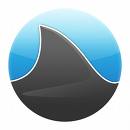
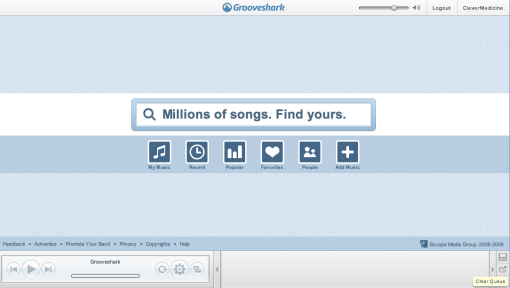

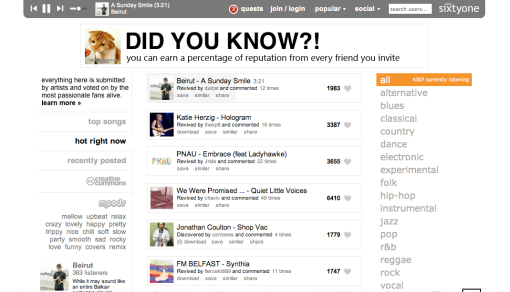

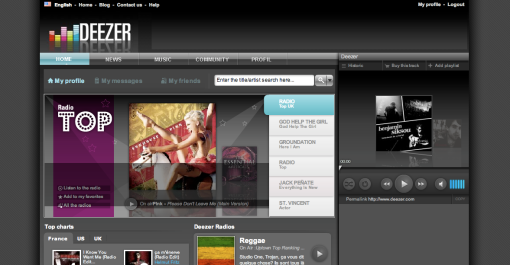
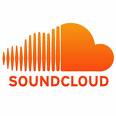


Recent Comments